The Kasten Core
The Kasten core is a 3-meter long square-barreled coring device that is lowered into the water with ten 45-pound weights stacked on its head - these weights will push the barrel down into the soft sediments once it reaches the seafloor.
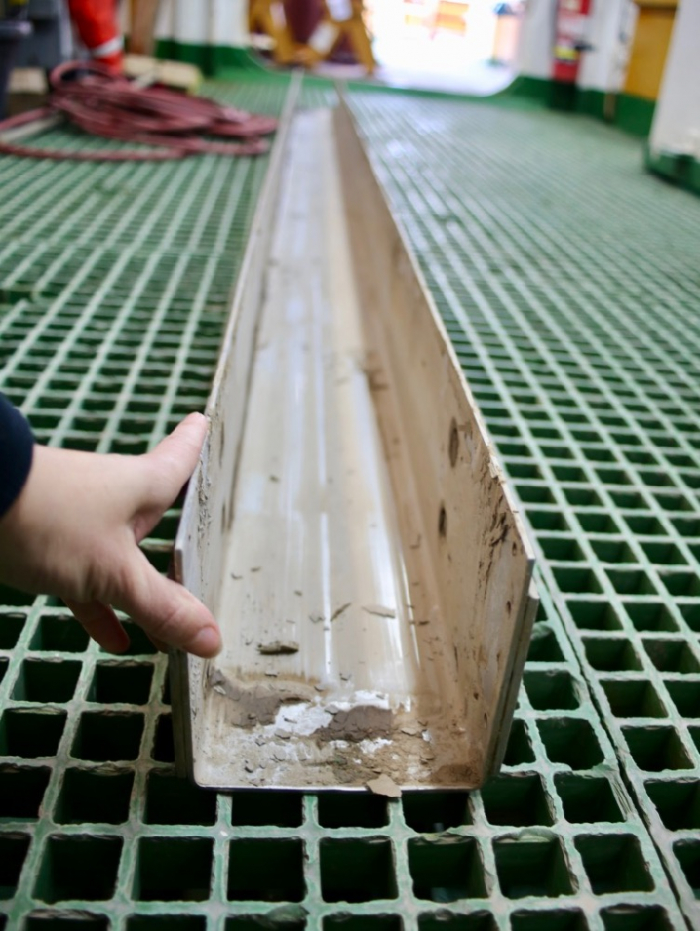
We all try to make predictions about the success of the operation when we see the core come out of the water - a brown coating of mud on the outside is a good sign.
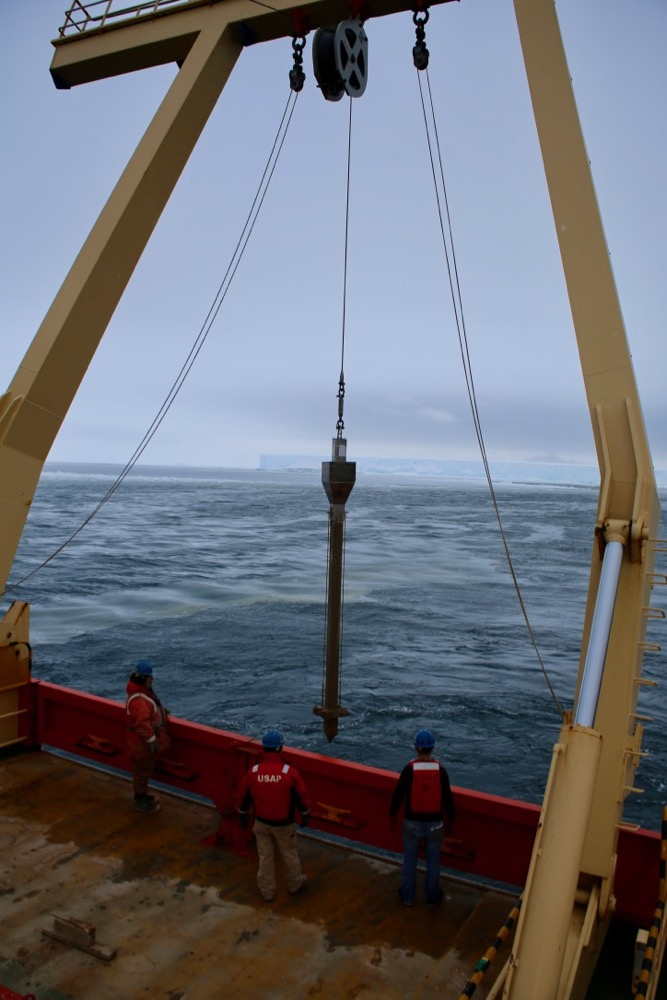
The marine techs remove the heavy weights from the head of the core barrel and open one panel of the lid to take a peek at what is inside. The team lifts the full core onto a cart so it can be wheeled (rather than carried) across the deck.
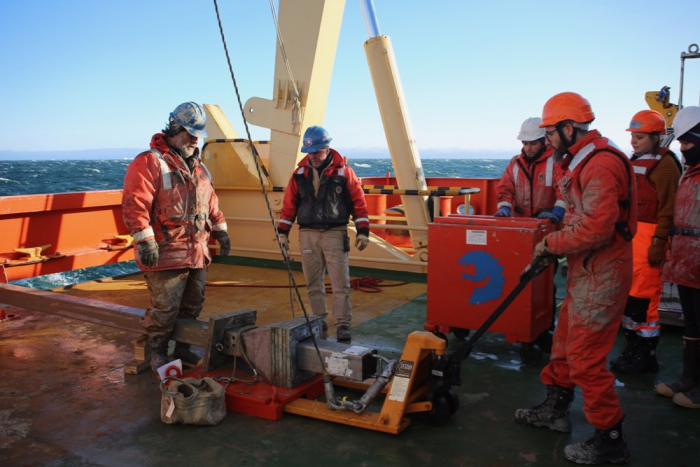
Teamwork makes the dream work (again) - the core has to be carried the last 30 feet to the lab benches.
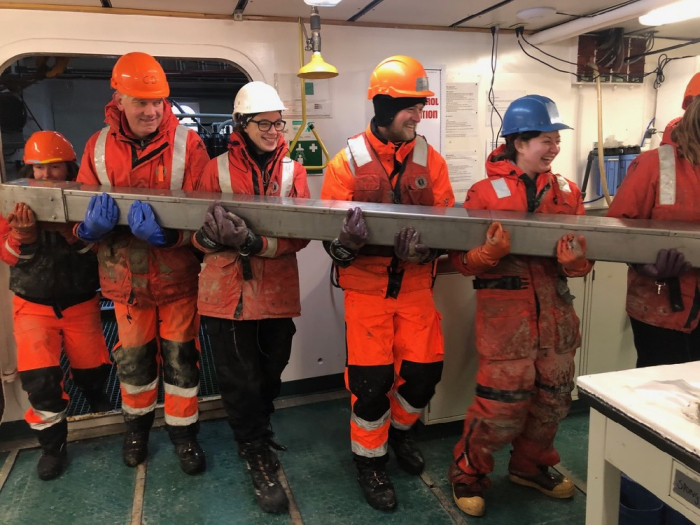
The outside of the barrel is cleaned off and all the lid sections are removed to reveal our acquisition - up to 3 meters of layered sediments from the bottom of the Southern Ocean, containing vast amounts of information about the history of water and ice.
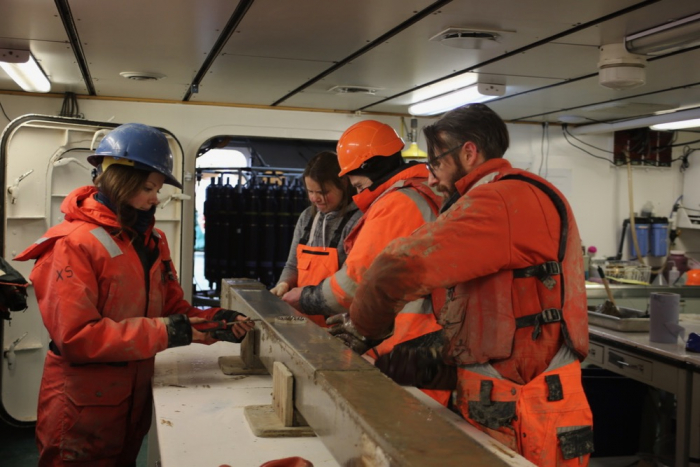
The top surface of the core is smoothed off with a giant piece of plastic creatively called the Super Scraper (the night shift team is great at a lot of things but pretty bad at nicknames - we also have a small plastic shovel they call Mr. Scoopy and a really big sponge named the Big Sponge) and then photos are taken of its entire length.
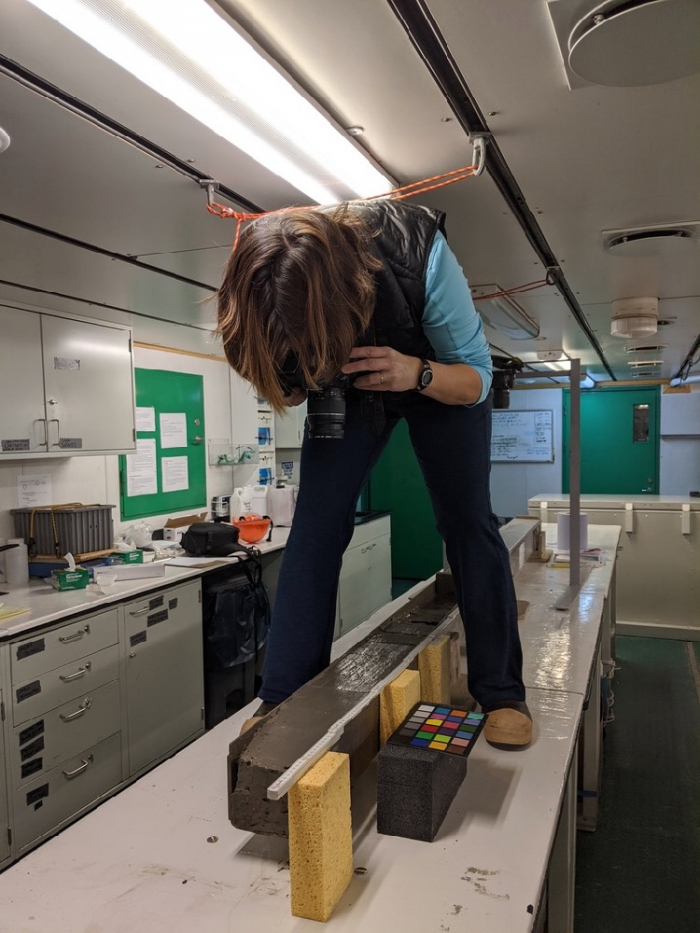
After that, analysis of the data hidden in the sediment can begin. Core experts CD Hillenbrand and Rachel Clark write a description of the sediments, looking for places where there are “significant” changes in color, texture, and composition of the sediment.
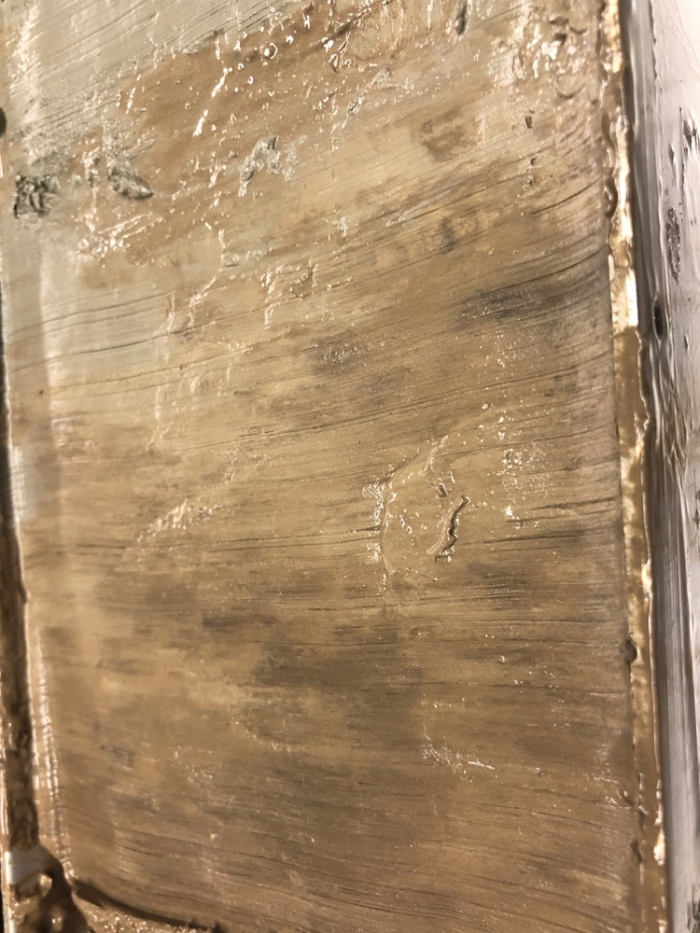
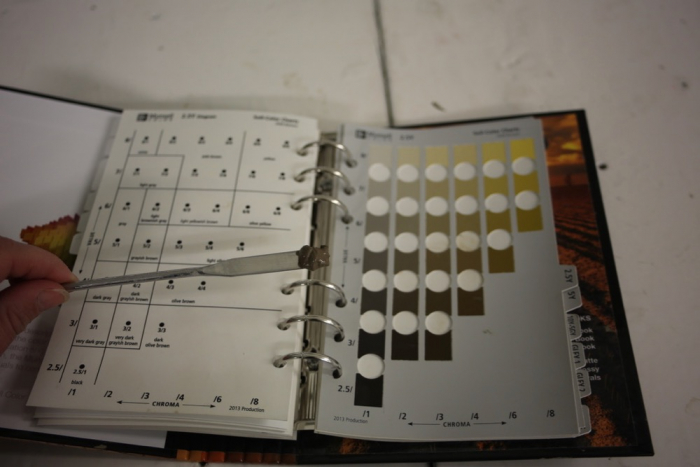
A small amount of vacuum pressure is used to suck water out of the sediments at 50 cm intervals.
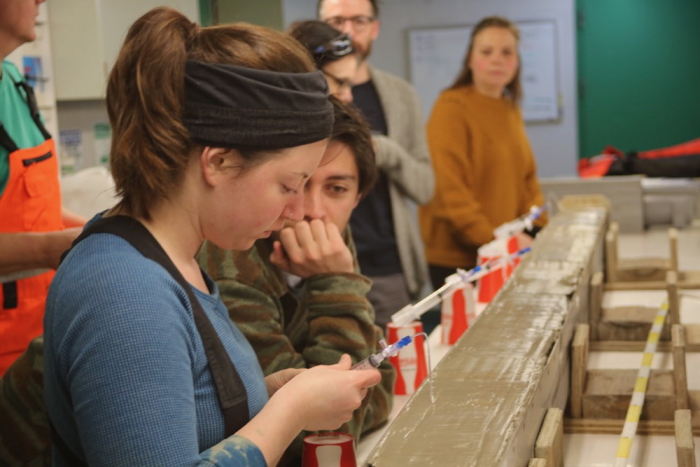
Mass dissection begins soon after that - using plastic spoons, 10 mL syringes with the bottoms cut off, metal spatulas, 3D printed scoops, and other tools, we attack the core in a highly-regimented manner to ensure that everyone who needs it gets their piece of the mud.
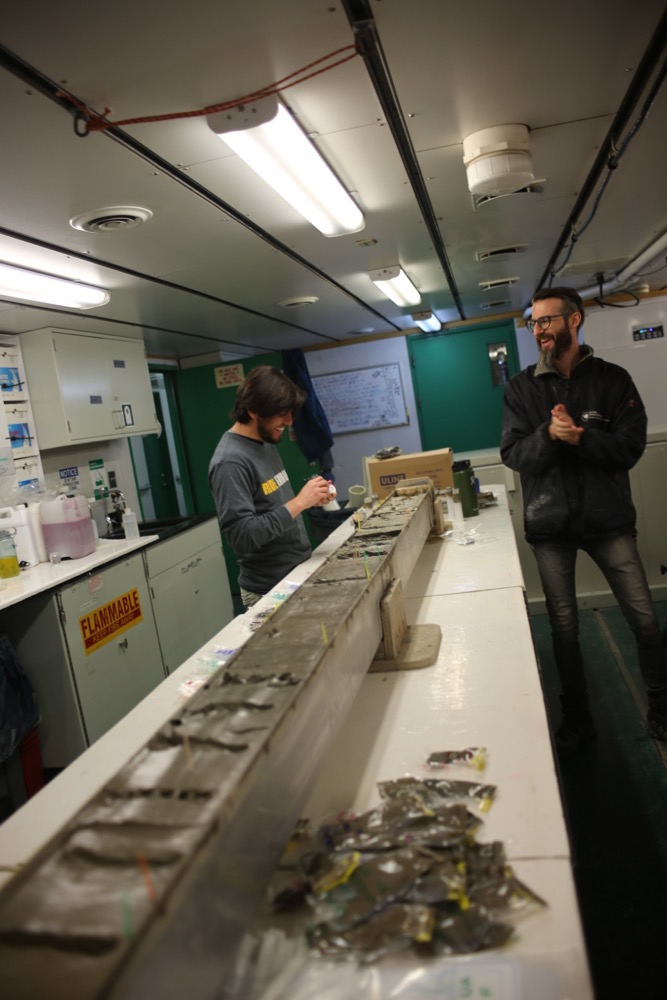
Samples are bagged up based on their intended analysis method and stored in the fridge nicknamed “Little Antarctica” (as opposed to the big Antarctica that is all around us outside, which is a good nickname but it didn’t originate from the night shift team).
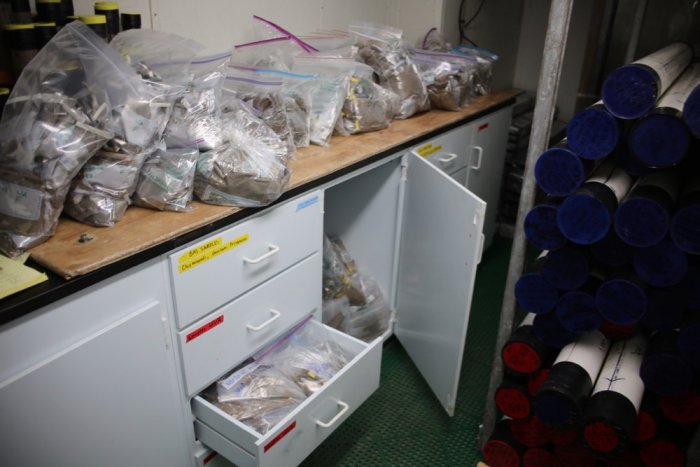
Remaining sediments are stored in archive trays, which will get shipped up to the University of Oregon at the end of this expedition and be stored there in perpetuity in case anyone ever wants to revisit NBP 20-02 KC 54 to see for themselves exactly what secrets the sediment contained.


Comments